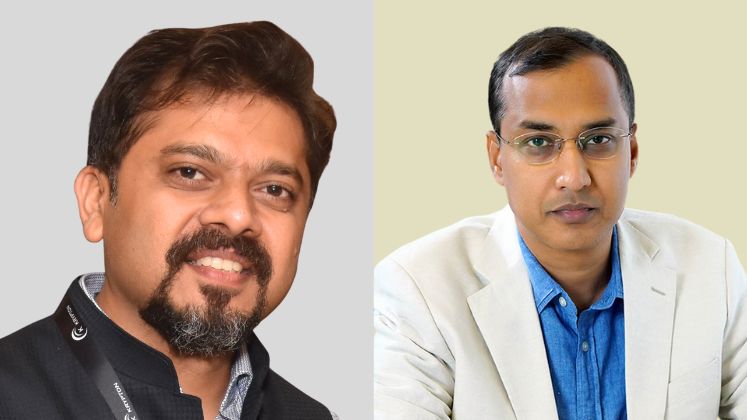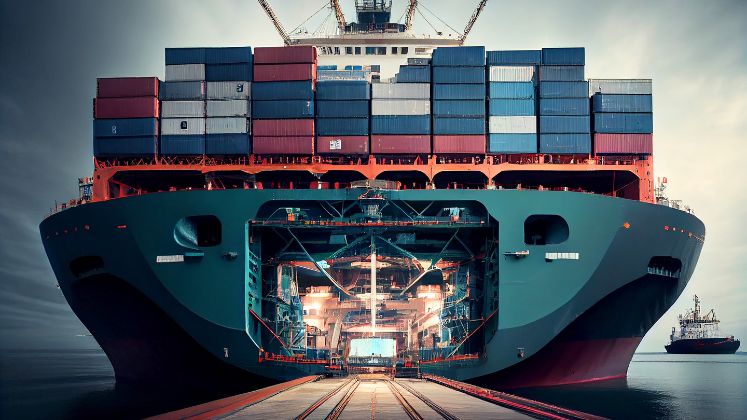
‘PM MITRA scheme needs additional support’
Tapaswi PVN, Senior GM, EXIM and Commercials, Arvind Ltd.
India is one of the world’s largest producers and exporters of textiles and apparel in global trade. However, India faces stiff competition from countries like China, Bangladesh, Vietnam and Cambodia, which have lower costs and preferential access to key markets making our exports 10 per cent to 15 per cent more expensive.
To boost its apparel exports, India can adopt various strategies such as pursuing trade agreements and partnerships with key markets like the US, UK, EU and UAE and resolving trade barriers and disputes; diversifying its product portfolio and market destinations, especially in the fast-growing segments of man-made fibre (MMF) and technical textiles; improving the quality and productivity of its apparel sector by adopting modern technology, innovation and skill development; enhancing its competitiveness by reducing the cost of capital, power, logistics and compliance and providing tax incentives and subsidies to exporters; and leveraging its strengths in design and creating a strong brand image for ‘Made in India’ products.
The PM MITRA scheme is a recent initiative by the Ministry of Textiles to set up seven Mega Integrated Textile Regions and Apparel Parks with a total outlay of Rs. 4,445 crore. These parks aim to create an integrated textiles value chain right from spinning to garment manufacturing at one location and reduce the logistics cost, wastage and environmental impact of the sector. The scheme also provides financial support and incentives to the park developers and investor units and facilitates convergence with other government schemes. The PM MITRA scheme is expected to boost the textile exports of India by enhancing its competitiveness, quality, productivity and innovation.
However, the scheme needs additional support to be effective as few primary factors are instrumental in making it a grand success. Key factors include improving the infrastructure and logistics facilities such as dedicated freight corridors, inland container depots and textile parks and ensuring uninterrupted power and water supply. All are interconnected to reduce the cost of raw materials and production. Rationalising the duty structure and providing a level playing field for the domestic and imported raw materials, especially man-made fibres and technical textiles would help in supporting the scheme. Industries have to also focus on technology and innovation such as digitalisation, automation, artificial intelligence, blockchain and government support is required to enhance the skill development and capacity building of the workforce.
Key pillars of our core strengths include abundant access to raw materials, especially natural fibres like cotton, jute, silk and wool. With its young population as the backbone, India has low-cost and skilled labour and strong entrepreneurial abilities. Due to the vast geographical spread and population, there is adaptability and flexibility of the small-scale manufacturing units to cater to specific and smaller orders. Also as a traditional textile manufacturing country, we have strengths in design, craftsmanship and sustainability and the potential to create a strong brand image for ‘Made in India’ products.
India is looking at new markets such as Latin America, Australia and Israel to push its apparel exports, which are expected to record healthy growth in the current fiscal. These markets have a high demand for quality and value-added products. However, we cannot ignore the existing and traditional markets such as the US, the EU, the UK and the UAE which account for about 75 per cent of India’s apparel exports. These markets are also growing and offer opportunities for diversification and innovation, especially in the segments of man-made fibres and technical textiles. India should also pursue trade agreements and partnerships with these markets to enhance its market access and resolve trade barriers.
We must also explore new products to remain competitive and adaptable in the volatile, uncertain, complex and ambiguous (VUCA) world. Man-made fibre (MMF) apparel, which is the fastest-growing segment in the global textile and apparel trade, accounts for about 70 per cent of the total trade. India has a low share of MMF apparel in its exports, which is about 10 per cent compared to China’s 55 per cent and Bangladesh’s 40 per cent. But the country has a huge potential to increase its MMF apparel exports by improving its raw material availability, quality and competitiveness. Technical textiles are functional fabrics used for various applications such as medical, hygiene, agriculture, defence and sports. The global market for technical textiles is expected to grow at a CAGR of 7.5 per cent from 2020 to 2027, reaching US $ 250.6 billion by 2027. India has a huge potential to increase its technical textiles exports by enhancing its technology, innovation and skill development. Arvind has ventured into this segment and is creating products in MMF and technical textiles catering to defence forces, electric vehicles and oil and gas companies. Therefore, I think India should look at these new developments in apparel exports, MMF apparel and technical textiles, to boost its growth, competitiveness and diversification in the global market.
About: Arvind Ltd.’s focus is on smooth procurement, purchase and logistics in its supply chain.
‘We need a plug-and-play model for faster result’
Pallab Banerjee, MD, Pearl Global Industries Ltd.
If you look on paper, India holds immense potential with abundant raw materials, a huge labour pool and a sizeable market. However, that potential is yet to translate on the ground. The main reason behind this is that we don’t have more industry clusters like Tirupur in Tamil Nadu which is home to over 10,000 garment manufacturers and employs over 6,00,000 workers. This one location accounts for more than 50 per cent of India’s knitted apparel exports. The need for such clusters is particularly required in states like Bihar, Uttar Pradesh, Odisha and West Bengal where there is high population density and a significant pool of skilled labour.
Our neighbouring countries such as China, Bangladesh and Vietnam have witnessed significant growth in their ecosystems for apparel manufacturing and exports, whereas India has been left behind. This underscores the importance of stable government policies to attract necessary investments and create a thriving industrial ecosystem.
We need to tap our strengths, especially those related to raw materials. We are the world’s largest cotton producer (23 per cent of global production) with the highest cotton cultivation area (39 per cent of the world’s total). India also stands as the second-largest producer and exporter of man-made fibres and textiles, particularly polyester and viscose. Our policies and infrastructure should be such that instead of exporting raw materials like cotton fibre or fabrics, we should prioritise the export of finished apparel.
However, the irony is that fabric suppliers receive better incentives for exports rather than catering to the domestic manufacturing market, even if this manufacturing is meant for exports. More the value addition happens in our country, the better it is. We have the ability to design for international markets and have a big domestic clothing market, thus now we are capable of generating fashion trends.
Another point that deserves discussion is the role of PM Mitra textile parks. It’s encouraging to see that textiles and garments are getting serious attention. These parks should attract investments, but if we have to focus on the apparel part, we need more of a plug-and-play model – pre-constructed facilities with all necessary infrastructure. These facilities should be made available for lease and thus can significantly lower industries’ initial investment, allowing them to allocate more funds towards technology and innovation.
Countries like China and Vietnam had a similar push in their initial days and we saw good results. The aim is to reduce the turnaround time, from project approval to the commencement of operations for industries and to attract fresh investments including the foreign ones. The government may construct these factories through project tenders or engage builders for the task. Through plug-and-play mode, an industrial park can be developed and factory sheds can be set up by state governments. This means that new entrepreneurs or existing companies can set up or expand their businesses with minimal cost and effort on a fast track basis with basic infrastructure being ready.
For sustainable growth, the key is to quickly create an ecosystem where trims, accessories, fabrics and garment factories are located next to each other, resulting in efficiency and cost-effectiveness. Tirupur cluster today has a very effective ecosystem and generates substantial business. We can draw inspiration from such examples where fabric, trims and garment manufacturing ecosystems are in one location. While strides have been made in this direction through the planning of PM Mitra and PLI, we can speed things up by exploring plug-and-play initiatives for quicker results.
| At its best, a modest expenditure of Rs.30-35 crore from the government on factory sheds with all required amenities for apparel manufacturing can create jobs for two thousand people. This can also be scaled down for smaller players and scaled up for larger ones. |
When we export fashion apparel to major retailers across the globe, it is important to provide excellent service, on-time delivery of the full ordered quantity and with required quality parameters. These should be made in a safe, healthy and sustainable environment and with each worker and employee getting all benefits as required by country’s laws. Each of these is non-negotiable.
While maintaining the highest of standards, the industry has to compete with both low-cost countries like Bangladesh and high-cost and highly efficient ones like Vietnam and China. Manufacturing efficiencies and cost competitiveness play an important role here. As a manufacturer/exporter, we have to keep investing in automation and process improvements all the time. So we need a workforce which needs to be high on productivity and should possess the willingness to learn new skills.
The challenge also lies in addressing the work culture amongst the first-time factory workers. India is a country of diverse religions and witnesses multiple cultures and regional festivals, resulting in too many local holidays and high absenteeism. Attrition levels are high. This affects apparel manufacturing set-ups as they employ a large number of first-time factory workers. Many families in rural areas are sending their youth for the first time to work in factories and more so the young women. To make manufacturing efficient, we are focusing on providing soft skills in addition to technical training. Similarly the need is there to update our labour policies to make it more productivity-oriented which will help in a big way.
India’s fast-growing market and economy are attractive to many countries, leading to discussions about free-trade agreements (FTAs) with nations like Oman, Peru, Europe and the UK. Currently, India has signed 13 FTAs. There is further scope to increase exports and India’s participation in the global value chain by exploring more bilateral agreements with big consuming countries. However, it’s essential to note that success isn’t guaranteed with FTAs. Despite having an agreement with Japan, Indian apparel exports have not increased much.
Another big category where India lags is in case of synthetic textiles and garments. The reason being both the lack of raw material and higher import duties in countries like the USA. Taiwan, South Korea and China have done maximum textile developments in synthetics as these fabrics have become more comfortable to wear and used for all kinds of apparel now. Hopefully, a recent push from the Government in the form of PLI incentives will bring down this barrier and make India an affordable source for synthetic clothing.
About: Started in 1987, Pearl Global is an end-to-end resource for all kinds of apparel with a presence across the globe.







